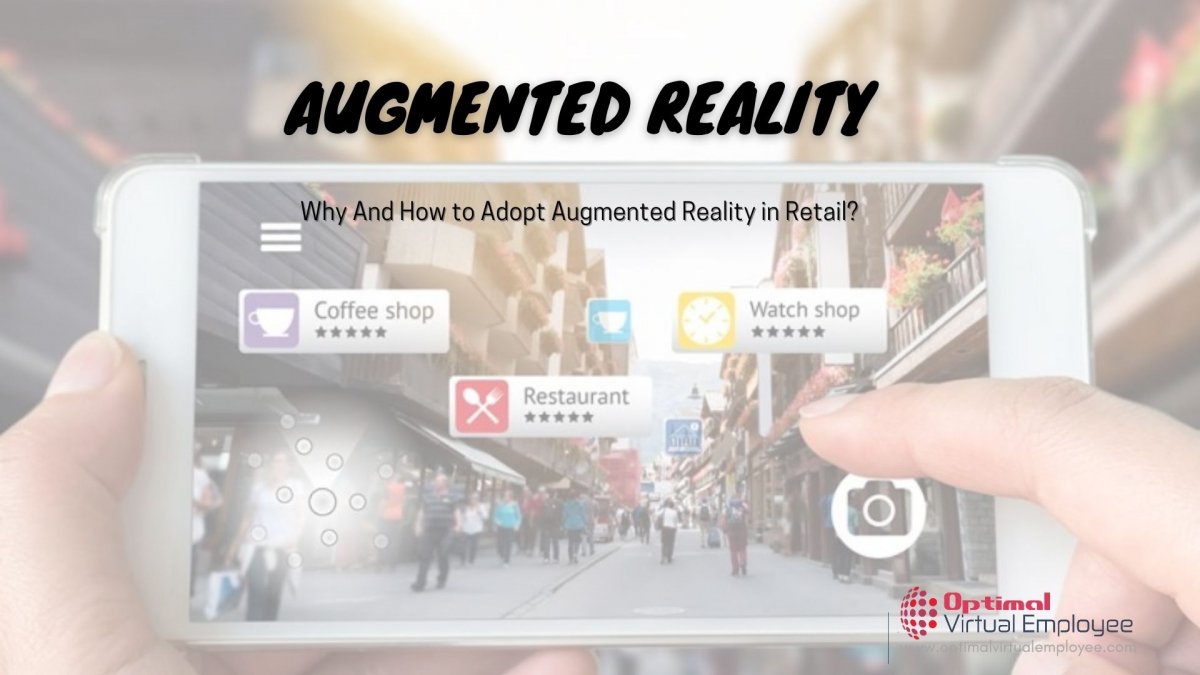Predictions around the Augmented Reality market estimate its value to reach $61.4 billion by 2023. AR is a popular disruptive technology that helps create 3D/CGI items to facilitate shopping. This interactive technology inspires the users to respond with physical activity of some sort.
A futuristic technology, AR has slowly crept into modern eCommerce and is all set to become an essential element of websites and apps. AR can aid important functions like advertising, localization, personalization and discoverability etc. AR led software development not only adds to sales but also ensures higher ROIs.
Why AR in Retail?
Legacy retail mechanisms proved insufficient, given rising customer expectations. As retail businesses aim to scale operations globally, they need to grow their capacity, processes, and systems to accommodate more customers efficiently. Software developers use AR tech in retail to create a profitable proposition for businesses.
It gives shoppers buying opportunities, more information about products and services being sold, easier try on opportunities, and an overall entertaining shopping spree.
AR tech makes it simpler to try out new products through digital copies. Skilled software developers use AR to increase user satisfaction and decrease return rates.
More recently, the advent of coronavirus has impacted retail in a big way. During worldwide lockdowns, social distancing restrictions were imposed, and offline shopping opportunities became rare. Gradually, people have come to adopt and accept the culture of shopping online.
They love how online retail is convenient, time-saving, and never disappoints them with offline retail limitations. Selling online with AR software development can suppress geographical limitations can expand consumer outreach.
Benefits of Using AR in Retail
-
Enhance the Customer Shopping Experience
Brands must create engaging shopping experiences, both online and offline. AR can help with brand loyalty and attract customers to visit stores from time to time. Popular in-store experiences include virtual mirrors and other innovative technology to improve the way customers shop.
AR software developers can bridge the gap between the online and offline shops by making the buying process interactive.
-
Better ROI
AR is a constantly evolving technology. Therefore, online businesses that opt to leverage AR will earn higher returns than those who don’t. Best software developers use AR to engage customers, improve sales and make better returns a reality for their clients.
-
Overcome Language Barriers
Diversity of languages around the world can often hamper the shopping experience for global shoppers. For instance, Google Translate AR mode allows shoppers to see more than 30 foreign languages in their native form. Software developers often build AR-based shopping apps to enable translation following region-specific protocols and dialect.
-
Increasing Brand Awareness
AR pushes the brand awareness of a business to newer heights. Apps built with AR technology helps curate unique shopping experiences for their customers. Retail marketers who use AR technology for interaction with customers can use it for instant feedback. Combining Augmented Reality and the 5G mobile networks can make marketing more effective than using traditional billboards or sharing online photos and videos.
Types of AR Development
-
Marker-based AR Development
Marker-based AR experiences work with a marker (a static real-world object) as a starting point for visualizing augmented content like videos, animations, 3D objects etc. Moving or rotating the markers make the digital content move simultaneously. This allows the users to perceive digital content as realistic when looked at from different angles.
In case the marker is too far away from the camera, AR content tends to disappear. Even the stability of tracking AR content depends on the contrast between an object and its background. AR content is visible only in high contrast situations. The most common types of AR markers are:
- ARToolkit, April Tag and ARUco present examples of markers that feature a specific pattern. They are easily discoverable.
- QR codes act dually to run web apps and also be markers. They have a tracking distance of around 1-2 meters, typically less than ARToolkits, April Tags and ARUco.
- Images like product logos and photos.
- Faces also act as markers which are detected through a program designed to recognize faces.
-
Markerless AR Development
Markerless AR works without markers and is often location-based. It recreates AR content sans any markers. Content recreation is triggered by localization, digital compass and technologies like mapping (SLAM) etc. Software developers often find it difficult to build an AR experience without a marker object and must explore the environment to accomplish this.
Best software development companies use popular AR libraries like ARCore (Android) and ARKit (iOS) to build marker-free AR experiences.
In the End
AR plays an indispensable role in building brand image and curating highly engaging brand experiences. According to a recent MarketsandMarkets report, the AR market will reach $72.7 billion by 2024. AR development is a relatively new realm that most businesses shy away from; however, it can be a game-changer in reality.
We are one of the best AR development company in India.
Our software developers‘ team believes that market-based solutions are better when displaying information anchored to a specific spot. Still, markerless AR offers more in terms of interactivity and deeper immersion. Let us be your offshore AR development partner and catapult your business towards new horizons.









